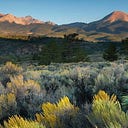Defending Salmon from Growing Threats
Alaska is known as the Last Frontier or the Land of the Midnight Sun, but it is also the Salmon State as it has one of the world’s largest populations of wild salmon. About 98% of our nation’s wild salmon comes from Alaskan waters. Crucial to the economy, ecosystem, and culture, salmon is an essential resource for Alaskans, and especially for Alaska Natives.
For centuries, Alaska Natives have relied upon salmon as a primary source of food and nutrition through subsistence fishing. Because it is so central to their well-being, it also is part of their traditions and culture.
Sadly, the Alaskan salmon population is under threat from overfishing, rising water temperatures, and mining projects that would destroy their habitat and pollute waterways. One of the biggest threats is the proposed 100-mile West Susitna Access Road which — combined with the proposed mining sites it would reach — would affect an entire salmon-dependent watershed, including one of the largest rivers in the United States.
Salmon need clean waterways to live and thrive. They are anadromous — they are born in freshwater, move to the ocean to feed then return to freshwater to spawn. When they die, their carcasses scatter nutrients from the ocean to the rivers, providing food to wildlife across the Alaskan watershed.
It is critical that salmon populations be sustained for the people who depend on them and also for the benefits to other species and landscapes in Alaska.
The Moore Charitable Foundation has partnered with several organizations that work to protect wild salmon populations in Alaska, including:
- SalmonState is a partner in Defend the WestSu, a coalition fighting the access road that “would cause irreversible harm to rivers, wetlands, and other critical fish and wildlife habitat across the Susitna watershed and waste millions of dollars the state cannot afford.”
- Wild Salmon Center also is a partner in the Defend the WestSu coalition, “working to protect this river against threats to the region’s hunting, fishing, and recreation economy, and its intact habitat.”
- Mother Kuskokwim Tribal Coalition, which works to protect the Kuskokwim River from the proposed Donlin Gold Mine, which would pollute the waterways and thereby decimate the salmon population.
- Susitna River Coalition, a grassroots organization based in Talkeetna, Alaska that supports a free-flowing Susitna River and the healthy communities and salmon & wildlife ecosystems it sustains.
From a primary source of food to a provider of economic opportunity, salmon is a vital part of life for Alaskans, creating a deep social and cultural identity for those who live in the North Pacific. We are proud to partner with these conservation champions who are working to sustain salmon populations, support Alaska Natives, and promote the cultural and economic importance of salmon.
